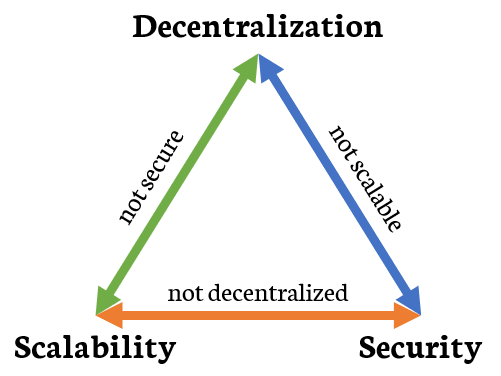What is money? The history of money goes back a long way and has been marked by many new beginnings, each of which followed the failure of the previous currency. The structure of today’s reserve currencies was fundamentally changed once again in 1971.
The following topics are covered in this knowledge article:
Table of Contents:
A blockchain is a digital ledger that records transactions in a decentralized and transparent manner. It is a database distributed across a network of computers, with each computer having a copy of the database. The data in the blockchain is stored in blocks and each block contains a set of transactions. Once a block is added to the blockchain, it cannot be altered or deleted, making the blockchain immutable.
The blocks are added according to a set of special rules (known as a consensus algorithm). This allows networks of decentralized physical computers working together to form a single virtual computer.
The blockchain differs from other computer networks in that it is permissionless. Any computer can become part of this larger virtual computer as long as it follows the consensus process. In a blockchain, the blocks themselves can be thought of as the computer’s hard drive. A block is a record that holds new transactions. When a block is completed, it is added to the chain. The consensus algorithm can be compared to an operating system (Windows or MacOS). The peer-to-peer network, in this comparison are the silicon semiconductor circuits that transfer data between different parts of a computer. The main characteristics of blockchain technology can be defined as follows:
Decentralization
No single entity has control over the database
Transparency
Each transaction is visible to all participants of the network
Security
Uses advanced cryptographic computer algorithms
Functionality of the blockchain
One significant difference between a typical database and a blockchain is the way data is structured. A blockchain gathers information into groups, also known as blocks, which contain transaction information. Blocks have specific storage capacities and, when filled, are attached to the previously filled block. This creates a chain of data known as a “blockchain.”
A database structures its data in tables, while a blockchain – as the name suggests – structures its data into groups (blocks) that are linked together. Thus, all blockchains are databases, but not all databases are blockchains. This decentralized system generates an irreversible data history. Once a block is filled, it is set in stone and becomes part of this immutable timeline. Each block in the chain is precisely timestamped when it is added to the chain.

Decentralized structure
One of the main advantages of blockchain technology is decentralization. Conventional databases are centralized, meaning they are controlled by a single entity, such as a bank or government. Decentralized databases, on the other hand, are distributed across a network of computers, and no single entity has control over the database. This makes the database more secure and less susceptible to hacker attacks or privacy breaches.
New information added to the blockchain in the form of blocks is constantly synchronized with the database, which is stored in multiple locations and updated periodically. All records in this database are public and verifiable. Since there is no central location, manipulating the system is difficult, as the information exists simultaneously in multiple places.
“Imagine a spreadsheet that is duplicated thousands of times across a network of computers. Then imagine that this network is designed to regularly update the spreadsheet. That’s a basic understanding of blockchain technology.” – Ameer Rosic, Blockgeeks
Unlike a traditional computer, a blockchain network can offer strong guarantees of trust based on the cryptographic and game-theoretical properties of the system. For example, a user or developer can trust that code executed on a blockchain computer will continue to behave as planned, even if individual computers in the network attempt to undermine the system. This allows a blockchain network to facilitate disintermediated, peer-to-peer interactions and digital services owned by communities rather than corporations.

Blockchain technology uses cryptographic algorithms to ensure the security and integrity of data. Each block in the blockchain contains a unique cryptographic hash, which is generated based on the data in the block. This hash links the block to the previous block in the blockchain, creating a chain of interconnected blocks. This process of linking blocks creates a permanent and immutable record of transactions.
Advantages compared to ordinary databases:
- Peer-to-Peer – The blockchain enables direct transactions between participants without the need for a third party.
- Distributed database – Each participant in the network always has a synchronized, updated version of all transaction data.
- Tamper-Proof – Integrity is ensured by multiple nodes in the network that independently validate all transactions.
- Fail-Safe – Redundant storage at all network participants protects against failures and data loss.
Disadvantages compared to ordinary databases:
- Effort – Integration into existing IT landscapes as complex due to the young technology.
- Efficiency – Database queries and transactions take more time and are more complex than with centralized services.
- Consensus problems – If there is no consensus in public blockchain networks, forks can occur.
- 51% Attack – If one party can claim 51% of the computing power, they can create their own transaction histories.
- Privacy – Transparency can also be detrimental to certain schemes, as all participants have visibility into every transaction and every party’s holdings.
Challenges of blockchain technology
Scalability: One of the biggest challenges of blockchain technology is its scalability. As the blockchain grows larger, more time and resources are required to process transactions. This can make the use of the blockchain slow and expensive, especially for applications that require a high volume of transactions.

Interoperability: Another challenge of blockchain technology is interoperability. There are many different blockchain platforms and protocols, and they are not always compatible with each other. This can make the transfer of data and value between different blockchains more difficult.
Regulation and Acceptance: Blockchain technology is still in its infancy, and there are many challenges in terms of regulation and adoption that need to be overcome. Governments and regulatory bodies are still grappling with how to regulate blockchain technology, and many companies and organizations are hesitant to adopt it due to concerns about security, scalability, and interoperability.
Use cases of blockchain
Blockchain is already being used in many areas. It can be distinguished between closed and open systems. While cryptocurrencies mostly operate on open systems, many companies have internal blockchain systems in operation that they maintain themselves. As blockchain technology matures and evolves, it is highly likely to be increasingly used and integrated in various industries and applications.
The use cases are extensive and mainly occur in areas where the properties of tamper-proof transparency are required. This requirement can be important in logistics, supply chains, administration, and, of course, the financial sector. Proposed as a research project in 1991, the concept of “blockchain” has now reached its late twenties. Over the past two decades, it has increasingly captured a significant portion of public attention. Companies around the world are elaborating on what the technology is capable of and how it will evolve in the coming years.
With many practical applications, blockchain technology is attracting global attention, not least due to Bitcoin and other cryptocurrencies. A buzzword on the tip of every investor’s tongue, blockchain is about making business and government operations more precise, efficient, secure, and cost-effective by reducing intermediaries. As we prepare for the third decade of blockchain, it’s no longer a question of “if” but “when” established companies will embrace the technology. The functions that blockchain can already assume in our daily lives are evident in our coverage of the topic.
Summary
- The History of Money began several thousand years ago when people started conducting barter transactions to fulfill their needs. Initially, items such as animals, grains, or gemstones were used as currency. Over time, the concept of coined money developed, with metal coins serving as currency. In the 19th century, banknotes emerged as an alternative to coins, and today, most money is stored in the form of electronic data in bank accounts. Modern monetary policy is primarily controlled by central banks, regulating the process of money supply.
- The main attributes of a currency are acceptance, stability, availability, and measurability. Long-term acceptance of a currency particularly depends on its store of value. Excessive inflation leads to a devaluation process, which in extreme cases can result in a complete collapse of the currency - a phenomenon that has occurred repeatedly in history.
- In the history of money, the abandonment of the gold standard in the 20th century had a profound impact by allowing governments and central banks to exert greater control over the money supply and economic policies. It marked the beginning of the fiat era, transitioning from a currency pegged to a fixed value to a currency backed by faith in the creditworthiness of the government or central bank.
- Today, the global economy is dominated by major fiat currencies. They play a critical role in the economy, facilitating trade and capital flow between nations and serving as indicators of a country's economic performance. Central banks can regulate and influence the money supply of a currency by raising or lowering their benchmark interest rates, which in turn affects the credit market and inflation. Additional tools for controlling the money supply, such as quantitative easing programs, are increasingly employed by central banks and also impact the value of a currency.
- After the 2008 financial crisis, many central banks expanded their tools to stimulate the economy. This included massive bond purchases and the use of QE programs, leading to a significant expansion of the money supply. These measures have not only contributed to inflation but also introduced more risks and complex challenges to the financial system.






